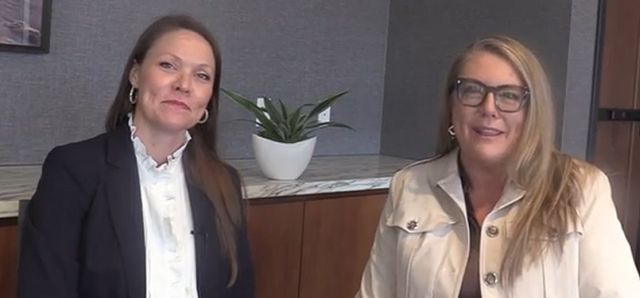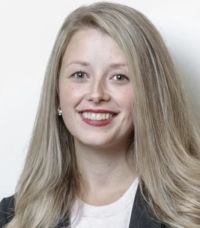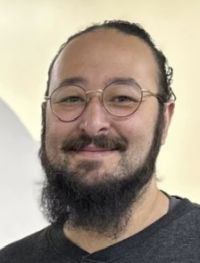12/20/2025
PODIATRISTS IN THE NEWS
AZ Podiatrist Recommends Wearing Compression Pants While Flying
According to Emily Splichal, DPM, an Arizona-based board-certified podiatrist, prolonged sitting on long flights can put pressure on the veins in your legs, reduce circulation, and ultimately lead to swelling. That, in conjunction with higher sodium intake while traveling, leads your body to retain water and bloat in the air. Compressive garments counter those effects because they're “designed to address venous return and prevent swelling,” Dr. Splichal explains.
 |
Dr. Emily Splichal |
To ward off bloating, she recommends wearing compression pants or socks on flights longer than six hours. “You might want to wear them on shorter flights if you have a medical condition contributing to swelling and leg edema,” she adds.
Source: Alison Syrett and Claudia Willen, InStyle [12/17/25]
12/17/2025
PODIATRISTS IN THE NEWS- PART 2
NY and CA Podiatrists Explain the Purpose of the Pinky Toe
Human toes, long removed from their tree-gripping days, are mostly noticed only when they are stubbed or exposed in sandals. In one 2009 experiment, researchers tested the efficiency of various toe lengths in humans, finding that individuals with longer toes had to expend a lot more energy to run, suggesting an advantage for smaller toes for us bipeds. Even the little pinky, which looks like a contender for the most pointless appendage on the human body, does its job and does it well.
 |
(L-R) Drs. Bruce Pinker and Wenjay Sung |
"The purpose of the pinky toe is to provide balance and propulsion," podiatrist Bruce Pinker, DPM from Progressive Foot Care (NY) told How Stuff Works. "As one takes a step, the foot rolls from lateral to medial in normal foot biomechanics." “We walk like a tripod fashion, where the big toe knuckle, the fifth toe knuckle and the heel, have a tripod walking ability,” Wenjay Sung, DPM attending physician at White Memorial Medical Group (CA) told PopSci. “If you remove one part of that tripod, you lose balance.”
Source: James Felton, IFL Science [12/14/25]
12/17/2025
PODIATRISTS IN THE NEWS- PART 1
OH Podiatrist Discusses Plantar Foot Pain
Foot pain is one of those frustrations people often try to ignore – until ignoring it becomes impossible. “For many, foot pain is something to try to ‘push through,’ but over time, it can impact daily activities," says Nicole Nicolosi, DPM, a foot and ankle surgeon at Cleveland Clinic. "Simple tasks like walking, standing for long periods, or even wearing shoes can become uncomfortable or painful – which can affect your ability to work, exercise, or enjoy leisure activities."
 |
Dr. Nicole Nicolosi |
Bottom-of-foot discomfort isn’t a single diagnosis. It may stem from a localized issue, such as plantar fasciitis or metatarsalgia, or it may signal something systemic. “Foot pain can either be a standalone condition or a symptom of a larger, underlying issue,” says Dr. Nicolosi. Standalone conditions like plantar fasciitis or hammertoes typically involve structural strain, overuse, or inflammation. "In these cases, the pain is directly related to foot structure or repetitive stress," Nicolosi explains.
Source: Daryl Austin, USA TODAY [12/15/25]
12/16/2025
INTERNATIONAL PODIATRISTS IN THE NEWS
TX Podiatrist Appointed Diabetes Ambassador in Nigeria
Babajide Ogunlana, DPM of Houston, TX was recently honored with a Humanitarian Service Award from the Diabetes Association of Nigeria (DAN) at the annual conference in Abuja, Nigeria. Dr. Ogunlana has been appointed as Diabetes Ambassador in recognition of his impactful contributions in diabetes care and public health in Nigeria.
 |
Dr. Babajide Ogunlana |
As a Board of Trustee member of the International Limb Salvage Foundation USA, and Diabetes & Limb Salvage Foundation Nigeria, Dr. Ogunlana continues to participate in podiatric medical outreaches to Nigeria with the goal of helping to reduce the high rate of lower leg amputations in the country.
12/13/2025
PODIATRISTS IN THE NEWS
CT Podiatrist Uses Spray-on Skin Transplantation
According to Andrew Rice, DPM, "One of the most transformative technologies I’ve encountered is autologous spray-on skin transplantation — a technique that’s not only innovative but deeply personal in its approach to healing. The process begins with harvesting a small section of the patient’s own skin — just 1 centimeter by 1 centimeter. From that tiny sample, we’re able to generate a sprayable suspension of skin cells that can be applied directly to wounds. It’s a remarkable way to accelerate healing while minimizing trauma to the donor site."
 |
Dr. Andrew Rice |
"This technique is especially effective for acute partial-thickness thermal burns in adults. When paired with meshed autografts, it also shows great promise in treating full-thickness burns in both pediatric and adult patients. But its applications go far beyond burns. We’re using it to treat full-thickness skin injuries caused by traumatic avulsion, degloving, and surgical excision following necrotizing soft tissue infections or skin cancer removal. For patients 15 and older, it’s proving to be a game-changer," says Dr. Rice.
Source: Bozeman Daily Chronicle [12/9/25]
12/03/2025
INTERNATIONAL PODIATRISTS IN THE NEWS
American Podiatrist Leaving Nova Scotia Over Bureaucratic Frustrations
An American surgical podiatrist says he has decided to leave Nova Scotia, Canada because he's unable to fully treat his patients, which leaves them lingering on long waitlists. Ronald Barron, DPM said he's fed up with dealing with the Nova Scotia College of Physicians and Surgeons and the provincial health department, which would not give him permission to perform some minimally invasive surgeries in his clinic.
 |
Dr. Ronald Barron |
"I have not worked anywhere, especially in the United States, where you have to wait three years to have a bunion or a hammertoe repaired," Dr. Barron said. According to wait times posted by the government of Nova Scotia, half of patients needing a bunionectomy wait nearly a year for a consult, and then wait another two and a half months for the actual surgery. Some patients are waiting more than three years for a consult, and then nearly six more months for the surgery.
Source: Carolyn Ray, CBC News [12/1/25]
12/02/2025
PODIATRISTS IN THE NEWS
Feet are the Foundation of the Entire Kinetic Chain: IL Podiatrist
Your gait is your personal walking style—and it’s not just about what your feet are doing. It’s the entire act of walking, which includes your joints, muscles, nerves and balance systems, says Michael Owens, DPM, with Northern Illinois Foot & Ankle Specialists (NIFAS). And that’s not all. Speed, rhythm, how high you lift your knees, if there’s arm swinging involved, and even the way you move your pelvis all play an integral role in a healthy gait.
 |
Dr. Michael Owens |
A compromised gait is important to recognize, as it could be your first hint of a medical condition brewing that needs to be addressed, such as declined strength, joint mobility, balance or neurological changes. Sometimes, the fix can be as simple as correcting foot mechanics. This might include performing strengthening exercises, investing in better footwear, or wearing orthotics that will greatly improve your alignment. After all, your feet are the “foundation of the entire kinetic chain,” Dr. Owens says, so they may just need a little extra TLC.
Source: Alexa Mellardo, Parade [11/30/25]
11/26/2025
PODIATRISTS IN THE NEWS
MD Podiatrist Discusses Benefits of Walking as We Age
Lacing up your sneakers and hitting the pavement for a brisk walk can be an incredibly effective, invigorating workout. But if walking is your go-to form of physical activity, you may find yourself wondering, "Is walking enough exercise to stay fit after 40?"
 |
Dr. Mikel Daniels |
"Walking is particularly beneficial for maintaining functional strength and balance, both of which tend to decline with age," Mikel Daniels, DPM, a board-certified podiatrist, president and chief medical officer of WeTreatFeet Podiatry, says. "It requires coordination and weight shifting that stimulates joint function and neuromuscular control. This helps prevent falls. Regular walking can reduce joint stiffness, improve circulation, improve strength, and enhance balance."
Source: Alexa Mellardo, Parade [11/23/25]
11/22/2025
PODIATRISTS IN THE NEWS - PART 2
ME Podiatrist Named in Top 50 Women Leaders of Maine
Women We Admire has announced The Top 50 Women Leaders of Maine for 2025. Maine’s identity reaches well beyond its iconic coastline. Among those honored is Melissa Williams, DPM, Associate Chief of Surgery of the VA Maine Healthcare System. Dr. Williams is a board-certified foot surgeon specializing in podiatric medicine and surgery. In addition to her current role, she serves as chief of section and podiatrist for the U.S. Department of Veterans Affairs, providing foot and ankle medical and surgical treatments.
 |
Dr. Melissa Williams |
Dr. Williams earned her Doctor of Podiatric Medicine from Kent State University College of Podiatric Medicine. She also completed a three-year surgical residency at Christiana Care Health Services in Wilmington, Delaware.
Source: Women We Admire [11/20/25]
11/22/2025
PODIATRISTS IN THE NEWS - PART 1
Increase in Ankle Injuries During Cold Weather: MI Podiatrist
As temperatures drop across Michigan, podiatrists at Legacy Foot & Ankle are sounding the alarm: winter weather can significantly worsen ankle pain, stiffness, and inflammation. With icy sidewalks, reduced circulation, and increased risks of slips and falls, the cold season often brings a surge of patients struggling with new or worsening ankle inuries.
 |
Dr. Joe Aoun |
Board-certified podiatrist Joe Aoun, DPM, founder of Legacy Foot & Ankle, reports a sharp rise in ankle pain cases every year between late November and March. “Cold weather makes tissues less flexible and more vulnerable to strain. Combine that with unstable surfaces like snow and ice, and you have the perfect recipe for ankle injuries,” says Dr. Aoun.
Source: Fox59 News [11/19/25]
11/21/2025
PODIATRISTS IN THE NEWS
Ankle Replacement Has Significant Advantages Over Fusion: PA Podiatrist
Daniel Plesniarski’s ankle problems started when he was a kid, with frequent sprains. By the time he reached retirement age, it had become a real problem. But he put off getting treatment, in part because a doctor at another hospital system recommended he get the joint fused. “I didn’t want an ankle fusion,” Plesniarski says. “I didn’t want to lose the ability to move my ankle.” Today, the pain and swelling are gone and the 72-year-old Andreas man says his ankle feels good as new, thanks to foot and ankle surgeon Elliot Busch, DPM, with Lehigh Valley Orthopedic Institute, along with the team at Lehigh Valley Hospital–Carbon.
 |
Dr. Elliot Busch |
“For patients who have ankle arthritis, ankle replacement is a fantastic treatment option that can give people their quality of life back,” says Dr. Busch. Replacing the ankle joint rather than fusing it has several advantages, he says. Fusions remove the pain by removing the joint and letting the bones grow together. But this can affect the way someone walks, Dr. Busch says, causing stress on other joints and possibly leading to “transfer arthritis” and eventual fusions of those joints as well.
Source: Paul Wirth, Lehigh Valley Health Network [11/18/25]
11/18/2025
PODIATRISTS IN THE NEWS
Sister Clinicians Highlight Cross-Specialty Collaboration in Dermatology and Podiatry
At the 2025 Elevate-Derm Fall Conference in Tampa, Florida, Shanna Miranti, MPAS, PA-C, and her sister, Larissa Schmidt, DPM, highlighted how often podiatry and dermatology overlap when clinicians are managing challenging skin and nail conditions. Their conversation demonstrated the practical value of exchanging insights across specialties and showed how those day-to-day intersections can improve patient care.
 |
(L-R) Dr. Larissa Schmidt and Shanna Miranti |
Dr. Schmidt, the immediate past president of the Florida Podiatric Medical Association, advised dermatology clinicians seeking local partners to engage with regional podiatric societies, emphasizing that podiatrists are enthusiastic collaborators as new therapies and technologies evolve. The sisters—third-generation podiatrists in their family—closed with a shared message: dermatology and podiatry share significant clinical overlap, and strengthening these interprofessional ties ultimately improves patient care across both specialties.
Source: Dermatology Times [11/15/25]
11/18/2025
INTERNATIONAL PODIATRISTS IN THE NEWS
Italian Podiatrist Was Beach Volleyball Champion
Riccardo Fenili, 50, was an excellent volleyball player and a beach volleyball champion, winning four Italian titles with four different teammates. Today, he has a completely different career. When I had an injury in 2007 and had surgery, a well-known orthopedist prescribed me a pair of insoles that hadn't been made very professionally. I had some doubts, and from that moment on, I started to do some research. I discovered that podiatry was practically non-existent in Italy, unlike in the rest of the world.
 |
Riccardo Fenili |
"I felt like giving it a try. For years, I'd been trying to do something besides volleyball, to figure out what I wanted to study. I studied podiatry, and I loved it. All movement starts with the foot. At first, it was about the sport, but now I enjoy caring for an elderly person much more [than volleyball players]. It's immensely rewarding."
Source: Doriano Rabotti, Quotidiano Sportivo [11/15/25]
11/13/2025
PODIATRISTS IN THE NEWS
Diabetic Wounds Challenge Physicians to Alter Care
The U.S. has a diabetic wound problem. “The problem is often that clinicians don’t look at the whole patient; they just look at the hole in the patient,” said Matthew J. Regulski, DPM, director of the Wound Care Institute of Ocean County and wound care podiatry specialist at RWJBarnabas Health, both in Toms River, New Jersey. The solution? Assess and refer.
 |
(L-R) Drs. Matthew Regulski and Richard Sherman |
As time is of the essence, clinical evaluation, pulse assessment, and probing the wound are the extent of the PCP’s initial role in this primary stage, said Richard Sherman, DPM, MBA, a podiatric surgeon in the Division of Vascular Surgery and Endovascular Therapy at Johns Hopkins Hospital, and assistant professor of surgery at Johns Hopkins Medicine, both in Baltimore. He said that he sees patients daily whose wounds have persisted due to inappropriate or ineffective initial treatment.
Source: Liz Scherer, Medscape [11/11/25]
11/13/2025
INTERNATIONAL PODIATRISTS IN THE NEWS
Lack of Regulation Contributing to Podiatrist Shortage in Newfoundland
The head of the Newfoundland and Labrador Federation of Podiatric Medicine is calling on the newly formed provincial government to create a regulated college for its members. Currently, there are only 11 podiatrists in Newfoundland and Labrador, all of whom are in the metro region. Dr. Kathryn O’Rielly says that many doctors are completing their schooling in Ontario and not returning home because they cannot practice to their full scope.
 |
Dr. Kathryn O’Rielly |
She says Newfoundland and Labrador is the only province that does not have its own college. “We are very under-serviced. Most places would have one podiatrist per 10,000 people and right now we have 11 members here in our province practicing,” she told VOCM News. “However, because of the decrease in the scope and practice here, it does not draw any desire for people to leave other provinces such as Ontario.”
Source: VOCM [11/11/25]
11/12/2025
INTERNATIONAL PODIATRISTS IN THE NEWS
Aussie Podiatrist Studying to Become General Practitioner
Stawell podiatrist Andrew Nashed is taking a big step in his medical career as he studies to become a GP. Grampians Health is working with Nashed to help him complete as much of his placement work as possible at its Stawell campus and at its medical center.
 |
Andrew Nashed |
Nashed has almost finished his first year of studies at Deakin University in Ararat and has already completed several placements including a day placement at Stawell under the guidance of Grampians Health Radiographer Sky Yang.
Source: Craig Wilson, The Stawell Times News [11/10/25]
11/10/2025
PODIATRISTS IN THE NEWS
MIS Bunion Surgery Means Less Downtime: NJ Podiatrist
Some people may choose to delay or avoid traditional corrective bunion surgery due to concerns about the procedure and recovery. But, there is another option – a minimally invasive bunion correction technique. “This isn’t your old-fashioned bunionectomy,” says Bayshore Medical Center podiatrist Mark DeCotiis, DPM. “Minimally invasive bunionectomy involves a smaller incision and a faster recovery, meaning people can get back to work and everyday activities faster.”
 |
Dr. Mark DeCotiis |
Recovery times vary based on the individual, but Dr. DeCotiis says that most people who undergo a minimally invasive bunionectomy procedure can expect:
Crutches for about five days before transitioning to a walking boot.
At 1-2 weeks post-op, most people are able to start physical therapy.
By week three, most people are back to wearing a regular sneaker.
Source: Hackensack Meridian Health
11/05/2025
PODIATRISTS IN THE NEWS
NJ Podiatrist Saves Foot of Motorcycle Accident Victim
On November 2nd, Blairstown, NJ EMS Chief Stephen Guiliana, DPM responded to a serious motorcycle accident with severe injuries. On scene, Dr. Guiliana identified the injury as a dislocated ankle with a pulseless and cyanotic foot.
 |
Dr. Stephen Guiliana |
After the patient was sedated by medics, Dr. Guiliana performed a successful emergency closed reduction of the ankle at the scene, restoring circulation and saving the limb. The patient was then airlifted to Morristown Medical Center for advanced care and surgery. Dr. Guiliana is Chief Executive Officer and partner of New Jersey Foot & Ankle Institute in Succasunna, NJ.
10/31/2025
PODIATRISTS IN THE NEWS
Plantar Fasciitis Rarely Requires Surgical Intervention: NY Podiatrist
The symptoms associated with plantar fasciitis can really interfere in your day-to-day life. It’s also one of the most common types of heel and foot pain, according to Michael J. Trepal, DPM, professor of surgical sciences and academic dean at the New York College of Podiatric Medicine of Touro University. It is often accompanied by a stabbing or sharp shooting pain centered around the bottom of the foot. Plantar fasciitis is an inflammatory, and in many cases, degenerative condition affecting the broad thick ligament on the bottom of the foot which helps to hold up the arch, Dr. Trepal told HuffPost.
 |
Dr. Michael Trepal |
Fortunately, Dr. Trepal said that plantar fasciitis can go away on its own, rarely requires surgical intervention, and can be effectively managed with over-the-counter aids. However, both experts cautioned that if pain persists for more than a few weeks, you should seek professional advice.
Source: Tessa Flores and Lourdes Avila Uribe, HuffPost [10/30/25]
10/28/2025
PODIATRISTS IN THE NEWS
TX Podiatrist Discusses Gout
If you wake up at night with severe toe pain, it could be a sign of gout—which Anne Sharkey, DPM is seeing more and more in her office. The telltale symptom: a red, hot, swollen big toe that’s extremely tender and painful. “You don't even want a bed sheet to touch it,” she says. “Patients call the office frantic in the morning, like, ‘I didn't do anything and I woke up in the middle of the night, and I have this excruciating pain in my foot.’” They often show up to their appointment barefoot, she adds, unable to withstand the sensation of anything touching their foot.
 |
Dr. Anne Sharkey |
Gout is diagnosed through a physical exam and lab tests, and patients need steroids or oral anti-inflammatories to get their pain under control, in addition to ongoing medication management and dietary changes.
Source: Angela Haupt, Time
10/23/2025
RESPONSES/COMMENTS (VA PODIATRISTS IN THE NEWS)
From: Jeffrey M. Robbins, DPM
Please note that Kittra Owens, DPM has been Chief of Staff at the Montgomery VAMC for a few years now. I am confident that there will be more [podiatrists becoming Chiefs of Staff at VAMCs] to come.
Jeffrey M. Robbins, DPM, Former National Podiatric Medical Director, Department of Veterans Affairs
10/22/2025
VA PODIATRISTS IN THE NEWS
From: Evan F. Meltzer, DPM (retired)
Congratulations to Dr. Quijano on his appointment of Chief of Staff at the Iron Mountain VAMC. Podiatrists have been deemed qualified for such a position for several years but the appointment of Dr. Quijano is the first podiatrist I’ve heard of who was selected for this prestigious position.
I hope to see further announcements of podiatrists who also have been selected for leadership positions in the VA, including becoming the Director of a VAMC.
Evan F. Meltzer, DPM (retired), Rio Rancho, NM
10/21/2025
VA PODIATRISTS IN THE NEWS
MI Podiatrist Appointed Chief of Staff at Iron Mountain VA MC
The Oscar G. Johnson VA Medical Center has announced the appointment of Victor Quijano, DPM, PhD as the chief of staff of the facility effective Oct. 6. As chief of staff, Dr. Quijano oversees all medical staff including physicians, dentists, psychiatrists, psychologists, social workers, physician assistants, nurse practitioners, and other specialties. In addition, he supervises support services including radiology, health profession trainee education, and credentialing and privileging.
 |
Dr. Victor Quijano |
Dr. Quijano has over 22 years of healthcare experience, eight of which are in leadership roles, both in the Department of Veterans Affairs and the private sector. Prior to assuming this position, he served as the deputy chief of staff – hospital services at the VA Eastern Colorado Health Care System. In addition, he previously served as the chief of surgery in Colorado and chief of podiatry in Portland, Oregon.
Source: Bud Sargent, The Mining Journal [10/18/25]
10/14/2025
PODIATRISTS IN THE NEWS
“Your Feet Never Go on Vacation": NY Podiatrist
“Your feet never go on vacation. They are constantly working and never on holiday. The best travel insurance is healthy feet," says podiatrist Rock G. Positano, DPM. ”According to Dr. Positano, a painful foot can ruin a $40,000 vacation even before it starts, so why aren’t people more pro-active when it comes to protecting the “Michelin tires” of the body?
 |
Dr. Rock G. Positano |
“People often ignore and under-estimate how important the feet are, especially when going on vacations that often require a tremendous amount of walking and standing, climbing hills, and uneven terrain,” he says. “What baffles me is the patient who comes to see us at our center at HSS, complaining of foot and ankle pain, the week or even the day before they are leaving on their voyage.”
Source: Sivani Vora, Forbes [10/12/25]
10/10/2025
HOSPITAL PODIATRISTS IN THE NEWS
CA Podiatrist Delivers Grand Rounds at Alma Mater
Life came full circle for David G. Armstrong, DPM, MD, PhD, a Distinguished Professor of Surgery at Keck School of Medicine of USC, when he gave the General Surgery Grand Rounds lecture at the University of Texas at San Antonio (UTSA) on Monday, October 6. The audience included UTSA's Department of General Surgery, and Divisions of Vascular Surgery, Plastic Surgery, and Podiatric Surgery. Dr. Armstrong completed his fellowship at UTSA in 1996 and then joined the faculty through 2000.
 |
(L-R) Drs. Lawrence Harkless and David Armstrong at UTSA |
His topic, "Team, Tools, and Technology to Prevent the Preventable; Amputations in Diabetes," was also attended by one of his mentors, Lawrence B. Harkless, DPM, Professor Emeritus at UTSA. Dr. Armstrong frequently discusses the role of mentorship on an educator's academic progeny, but perhaps the two most special attendees were his biologic progeny: Alexandria Armstrong, DPM, the chief resident in podiatric medicine and surgery at UTSA, and Natalie Armstrong, a PhD candidate at the Johns Hopkins Bloomberg School of Public Health.







